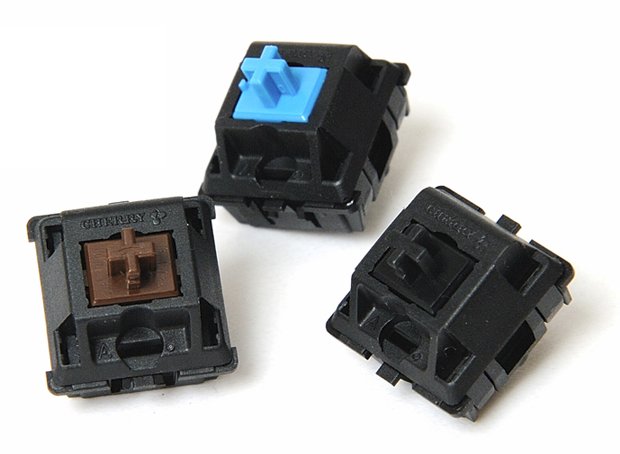Five Mechanical-Switch Keyboards: Only The Best For Your Hands
Today's we're venturing into the world of mechanical-switch keyboards, which are oh-so-satisfying to use. We'll present five different models and offer an educational exploration of the technology. At the end of the day, these are all a pleasure to use.
Summary And Recommendation
Summary
First things first. All of the keyboards tested are excellent, which reflects on the generally high-end nature of this niche. We didn't encounter any build quality-oriented issues among the test candidates, and they not only met, but routinely exceeded our expectations. This shows, on one hand, the investment made in developing these keyboards and the attention to detail. On the other hand, it showcases the consistent quality of Cherry's switches, regardless of their color and the devices into which they are integrated.
Which keyboard is the best?
The answer isn’t easy. All of them are great and none of them are best. We deliberately tested keyboards with three types of switches and came to the conclusion that each version is best suited to certain applications.
However, we must emphasize that there is no single genre for which any one of these keyboards would be completely unsuitable. All of these devices teeter between "very good" and "excellent," and accordingly all of our complaints are extremely picky. In addition, one must allow for a user's subjective preferences, especially on a device as personal as a keyboard. Just as hands and fingers are different from one enthusiast to another, the reaction of users to these keyboards could range from good to euphoric.
The fact, in our view, is that all of these switches are significantly superior to the usual rubber domes. This applies to the product's life cycle and the experience you have using it. You will find keyboards even pricier than these, but that's a consequence of built-in special functions and gimmicks, not better quality or suitability.
Do you need PS/2 or is USB good enough?
Get Tom's Hardware's best news and in-depth reviews, straight to your inbox.
Theoretically, you should go for PS/2 if it's available. But you really have to be a turbo-typer to notice a difference. And still you would only perceive it in very few exceptional situations. If your PC doesn't have a PS/2 port, it's unlikely that you'll miss out on anything here. Go ahead and use it though, if that'll put your mind at ease. Certain differences can be measured, but not felt.
Why no clear winner?
Quite simply because there are no losers. Each keyboard has its own specific advantages and appeals to its own target audience. And whether illuminated or not, heavy or light, all have tiny advantages and disadvantages.
Whether the user is a tactile light-typer or a heavy-handed key-pounder, we're sure that there's something for everyone represented here. All the keyboards tested performed at almost the same level, regardless of price: a rare enough result for a roundup. If you're playing with the idea of typing and gaming mechanically in the future, you can pick up any one of these models with a clear conscience. You certainly won't regret it.
Current page: Summary And Recommendation
Prev Page Razer BlackWidow Ultimate: Test
Igor Wallossek wrote a wide variety of hardware articles for Tom's Hardware, with a strong focus on technical analysis and in-depth reviews. His contributions have spanned a broad spectrum of PC components, including GPUs, CPUs, workstations, and PC builds. His insightful articles provide readers with detailed knowledge to make informed decisions in the ever-evolving tech landscape
-
"You will find keyboards even pricier than these, but that's a consequence of built-in special functions and gimmicks, not better quality or suitability."Reply
That's a bit ignorant, since you didn't test them. Try a Topre Realforce and tell me it's a gimmick. -
stiehl Hmm looking at those keyboard's layouts make me wince. I don't think I could stand a huge enter key, a nonexistent "\", Y and Z being switched, and a funky shift key. I'm happy with my blank das keyboard, thank you very much.Reply -
michaelahess I actually went away from mechanical keyboards about 7 years ago. I really prefer a solid rubber dome keyboard. I currently use a Logitech MX5500 for gaming and a Logitech Wave for typing. Never had any issues with either for their purposes. I do miss the tactile feel, but honestly the 5500 is a MUCH better gaming board, plus the noise doesn't drive me crazy.Reply
For all of you with exotic keyboards, you must be extra special picky ;) I type 110 wpm without error and have no trouble with the wave or 5500. -
mortsmi7 I kind of wished they had compared them to some mainstream keyboards like the cheapy walmart logitech, dell keyboard, or ibm. Sure they work great, but compared to what. I'm not a fan of loud and clicky ibm, but thats as far as my interest in key-presses goes.Reply
I bought my G110 for the extra macro keys that I never use. In fact I use the onboard volume control more often.
-
Where is the Model M? Is it too cool for this review?Reply
And it's "buckling spring", not "bent spring"
